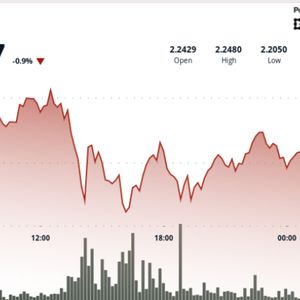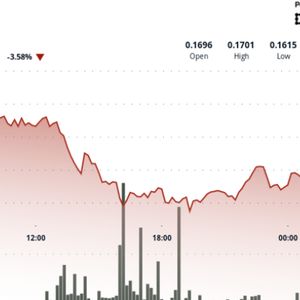The EU downgrades 2025 growth forecasts due to tariff uncertainties
3 min read
The European Commission has revised down its growth projections for both the euro area and the wider EU, primarily because of the lingering uncertainty and heightened barriers in international trade stemming from US tariffs. In its annual spring forecast, released on Monday, the Commission now anticipates that the 20 countries sharing the euro will expand by just 0.9% in 2025, down from the 1.3% growth projected last November, while the full bloc of 27 member states is expected to grow by only 1.1%, as opposed to the 1.5% previously envisioned. US has maintained high duties on EU products This downgrade reflects the impact of US President Donald Trump’s administration maintaining elevated duties on key European exports, 10% across most goods and up to 25% on steel , aluminium and automobiles, and the knock-on effects of tit-for-tat measures by China and other trading partners. Commission economists stress that the resulting “weakening global trade outlook” and “higher trade policy uncertainty” have materially depressed export growth, with the latter now at levels not seen since the early days of the Covid-19 pandemic. Valdis Dombrovskis , the EU’s Economy Commissioner, told reporters that the prospect of enduring or even escalating trade tensions “continues to weigh heavily on Europe’s external demand.” He warned that further fragmentation of world trade could both drag down growth and rekindle inflationary pressures. Indeed, while consumer prices in the euro area are forecast to ease toward the European Central Bank’s 2% target by next year, any fresh rounds of tariffs or retaliatory measures could upset that disinflationary trend. The forecasts assume a baseline in which US duties remain at their current levels for 90 days, following a temporary decision in April to halve steel, aluminium, and vehicle tariffs from 25% to 10%. Brussels officials have used this pause as their scenario for the coming months, though they acknowledge that reaching a comprehensive trade agreement with Washington would be the most effective way to bolster Europe’s growth prospects. Similarly, deepening trade ties with emerging markets and accelerating negotiations on new free-trade deals could provide additional upside. The Commission cites other factors that will add to the bloc’s woes Beyond external headwinds, the Commission flags several other downside risks . Climate-related disasters, increasingly frequent and severe, pose a persistent threat to productivity and output. Domestically, public finances in the aggregate euro area are expected to slightly deteriorate; the budget deficit is projected to rise from 3.1% of GDP in 2024 to 3.2% this year and 3.3% by 2026. The debt-to-GDP ratio should climb from 88.9% to just under 90% this year and to 91% in 2026. Nevertheless, the Commission also sees some silver linings. Unemployment in the euro zone is forecast to continue its gradual decline, reaching an average of 6.1% by 2026. Consumer price inflation, after peaking at 2.4% last year, should decelerate to about 2.1% in 2025 and further to 1.7% in 2026, assuming no fresh shocks. And if EU members were to channel more resources into defense and strategic industries, that spending could help stimulate growth even amid uncertain global trade conditions. In its report introduction, Maarten Verwey , director-general of the Commission’s Economy Department, lamented that “the world was largely unprepared for the sharp protectionist shift in US trade policy.” He argues that the recent temporary tariff reductions should serve as a stepping stone toward more durable, multilateral solutions. Without such progress, however, the Commission cautions that Europe’s growth trajectory will remain subdued, with only a moderate rebound to 1.4% growth in the euro area and 1.5% for the EU as a whole expected in 2026. Cryptopolitan Academy: Tired of market swings? Learn how DeFi can help you build steady passive income. Register Now

Source: Cryptopolitan



